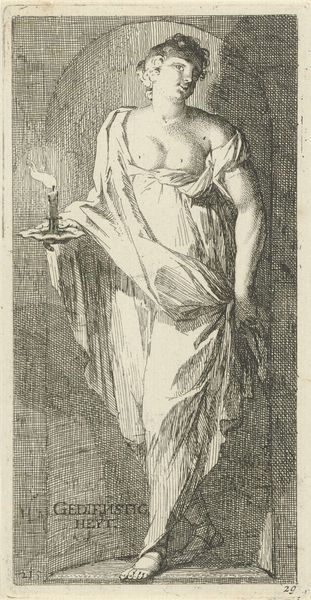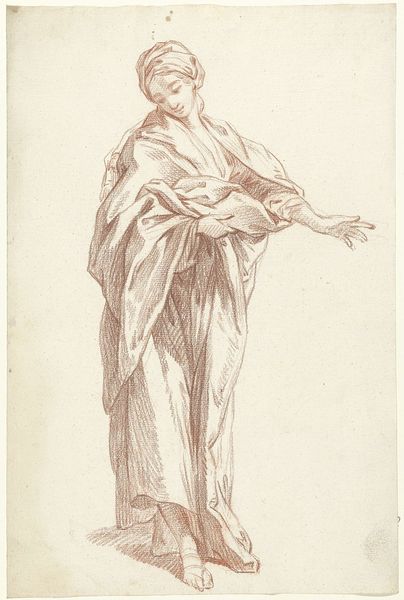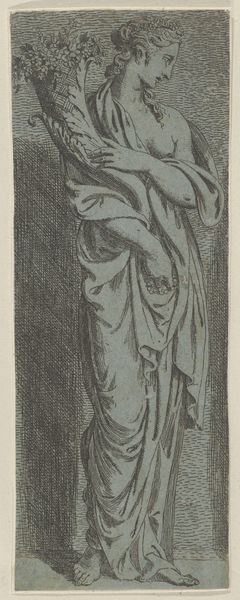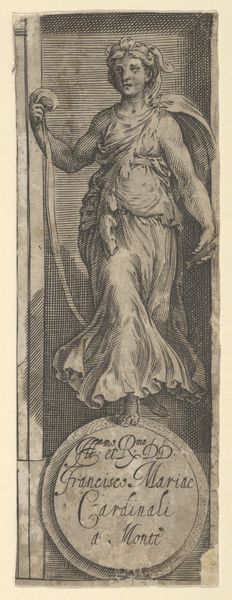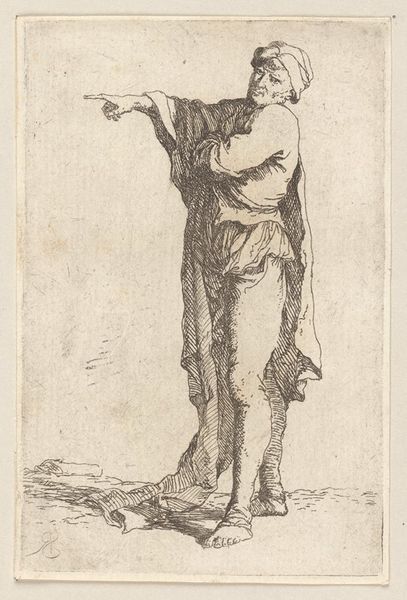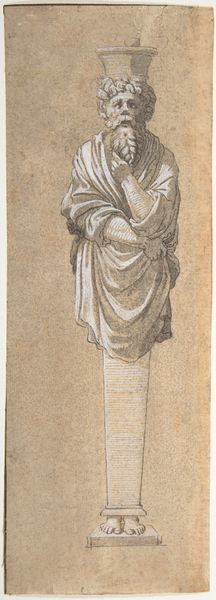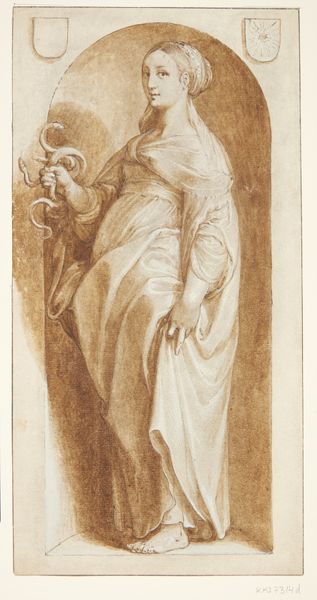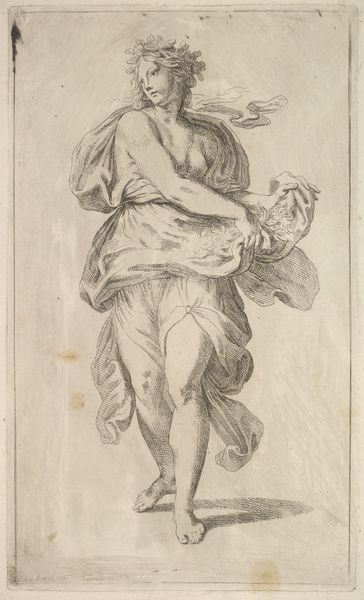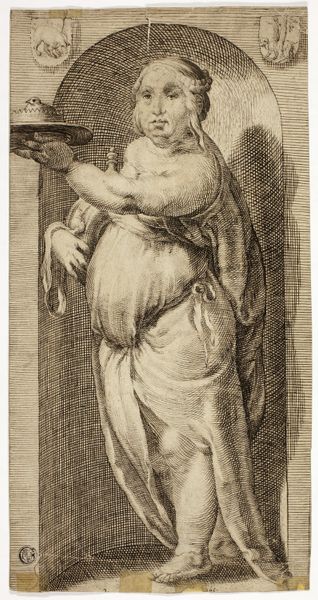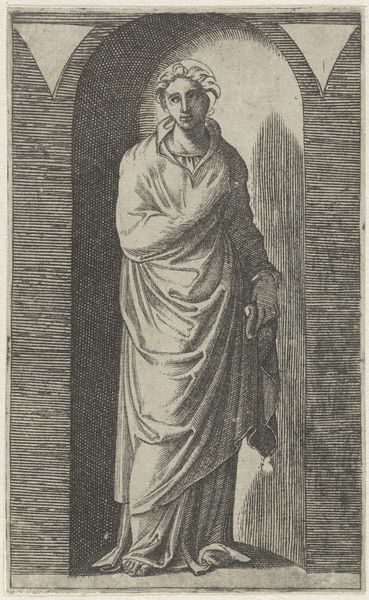
Standing female figure in loose classical robe, with arm outstretched 1645
0:00
0:00
drawing, print, etching
#
portrait
#
drawing
#
baroque
# print
#
etching
#
figuration
#
history-painting
Dimensions: Sheet: 4 5/8 × 2 15/16 in. (11.8 × 7.5 cm) cut within platemark
Copyright: Public Domain
Curator: Standing before us is "Standing female figure in loose classical robe, with arm outstretched," an etching by Wenceslaus Hollar, dating back to 1645. Editor: Immediately, I'm struck by the delicate lines; the textures seem almost tactile despite the monochrome medium. It has this interesting starkness combined with elegance. Curator: Absolutely, Hollar was a master printmaker. What I find compelling is how this simple image invites us to question notions of feminine virtue in Baroque period. She's classical in attire, but what exactly is she offering, gesturing toward? Who was Hollar working for and why? Editor: And what of the labor involved in creating such detail with etching? Think of the engraver, meticulously carving those lines onto the metal plate. The mass production allowed by printmaking challenges the idea of unique, high-art object by placing art within the reach of many— a nascent democratization through reproducibility. Curator: That is precisely why printmaking in general interests me so much. The materials dictate dissemination which ultimately leads to a democratization of an idea—an argument, in this case, for Baroque notions of gender. What we see here is this figure frozen in time, eternally gesturing toward a world still structured by hierarchical, religious assumptions that women occupied a different tier. Editor: I see the shadow differently, quite literally a shadow but perhaps something more: an imposition from an elite patron onto this artist and therefore, in turn, on the woman presented? Curator: Possibly. It could signify something as mundane as lighting within a studio, but reading the work in the context of gender and patronage adds complexity, which is necessary when considering artwork such as this. Editor: I find the stark contrast helps spotlight material conditions of Baroque Europe by asking: how much time was spent rendering garments as opposed to human form? Which one carried the actual meaning in a culture concerned about external appearances of luxury as status? Curator: I appreciate how situating the artistic practice within the means of production leads you to pose challenging questions. Thank you! Editor: The questions continue for me, too. What else could art contribute beyond documenting powerful persons during these moments in Europe?
Comments
No comments
Be the first to comment and join the conversation on the ultimate creative platform.

